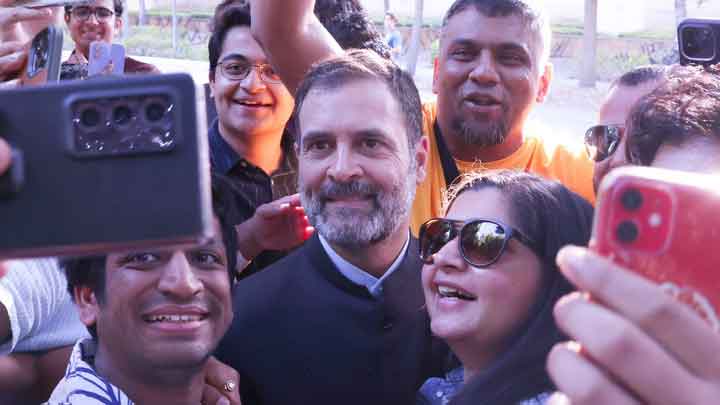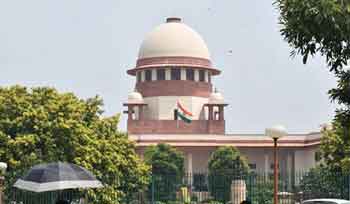INVC NEWS
New Delhi : The Rahul Gandhi’s Ladakh visit brings to the forefront the reality of China’s land occupation. Dive into the comprehensive analysis of his assertions, the historical backdrop, and Ladakh’s perspective on this geopolitical challenge .
The Congress leader Rahul Gandhi’s recent tour has sparked renewed discussions about India’s territorial integrity and the contentious China-India border issue. Amidst this backdrop, Gandhi’s criticisms of the Modi government’s handling of the situation have taken center stage. In this article, we delve into the intricacies of his statements, exploring the historical context, local sentiments, and the broader implications of China’s land occupation.

Contextualizing Rahul Gandhi’s Assertions
Rahul Gandhi’s tour of Ladakh has not only rekindled public interest but has also drawn attention to the ongoing tensions between India and China. Addressing Prime Minister Narendra Modi’s assertion that no land had been ceded to China, Gandhi emphatically claimed that thousands of kilometers of Indian territory had indeed been occupied. This bold statement underscores the urgency of examining historical events, assessing evidence, and addressing the concerns of Ladakh’s populace.
Historical Realities and Current Concerns
The disputed territories in Ladakh have a complex history, with various agreements and geopolitical shifts contributing to the present situation. While China’s territorial ambitions in the region date back decades, the recent encroachments have rekindled long-standing apprehensions. Rahul Gandhi’s assertion that the people of Ladakh are well-aware of the land occupation by China resonates with local sentiments, where concerns about sovereignty and territorial integrity run deep.
The People’s Voice: Ladakh’s Perspective
Gandhi’s interactions with the people of Ladakh shed light on their lived experiences and aspirations. Praising the resilience of Kargil’s citizens and their unwavering support for India during times of conflict, he highlights the solidarity that emerges in times of crisis. His “Bharat Jodo Yatra,” aimed at fostering unity and ending animosity, reflects the urgency of dismantling hatred and promoting communal harmony. The tour’s postponement due to inclement weather underlines his commitment to connecting with Ladakh’s residents on a personal level.
The Ideological Connection
Drawing parallels between Mahatma Gandhi’s ideology and the spirit of Ladakh’s people, Rahul Gandhi underscores the enduring presence of Congress’ values in the region. His observations about Ladakh being a second home for people from across India resonate deeply, underscoring the welcoming nature and warmth of the local populace. This unity in diversity echoes the principles upheld by the Congress party throughout India’s history.
Addressing Local Concerns
Gandhi’s recognition of Ladakh’s challenges extends beyond China’s land occupation. He acknowledges the suppression of local representation and voices, emphasizing that the region’s transition to a union territory should not result in the silencing of its citizens. The promise of employment, often elusive, remains a pressing issue, as does the lack of adequate mobile connectivity and air travel accessibility.
Harnessing Natural Resources
Ladakh’s abundance of solar energy potential is a significant topic of discussion. Rahul Gandhi points out the BJP’s understanding of this fact and its implications for the region’s representation. As the world moves towards renewable energy, Ladakh’s untapped solar resources could not only contribute to India’s energy needs but also stimulate economic growth and opportunities for its residents.
Implications for the Future
Rahul Gandhi’s tour highlights the urgency of addressing Ladakh’s concerns comprehensively. As India navigates its geopolitical challenges, providing a platform for the region’s voice is crucial. By acknowledging the historical context, embracing local perspectives, and charting a course towards sustainable development, India can strengthen its stance on the global stage.
Conclusion
Rahul Gandhi’s visit to Ladakh has ignited conversations about the region’s challenges and aspirations. His assertions regarding China’s land occupation, local sentiments, and the need for inclusive development paint a vivid picture of the complexities at play. As the world watches the events unfold, it is imperative that India prioritizes the welfare and aspirations of Ladakh’s people, ensuring a future of prosperity, unity, and shared progress.













